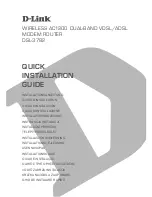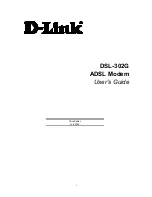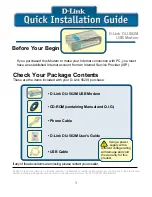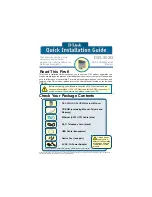
5 PTC-Firmware
•
The first character is a letter, with a range of A to Z. This letter sets the area code and
is allocated to one transmitter in the reception area. Which letter is allocated to which
transmitting station can be seen relatively fast, as the transmitting station is usually
also mentioned in the message itself.
The second letter describes the type of message. The following types are presently
defined:
A: Navigational
Warning
B: Meteorological
Warning
C: Ice
Report
D:
Search and Rescue Info
F: Pilot
Message
G: DECCA
Message
H: LORAN-C
Message
I: OMEGA
Message
J: SATNAV
Message
K:
Other NAV aid system Msg
L:
Navigational Warning (2)
Table 5.5: NAVTEX message types
•
The next two places in the message identifier contain the message number. This
number belongs to a message of a particular type and remains unchanged when a
message is transmitted more than once. The numbers are consecutive. The number
has a decimal format and comprises 00 to 99. If an overflow occurs, i.e. "started"
again at 00, then usually, the "old" 00 message is no longer active, and permission
to erase has been granted, or has already automatically been erased by the
NAVTEX processor. This is naturally valid for all numbers in consecutive
operation. An exception can occur in the very numerous "Navigational Warning"
messages. That is why there are two different message type letters, A and L,
which actually describe the same type of message. This trick allows the possible
number of active "Navigational Warning" messages to reach 200.
5.8.3
Operating the NAVTEX Processor
The NAVTEX processor has only a single new command in the
cmd:-
menu. This is
NAVtex
. This command allows the complete configuration and activation of the
automatic NAVTEX processor. It operates in the background, as a completely seperate
process within the PTC-IIex multitasking environment.
When activated, the NAVTEX processor lays down a directory with the name NAVTEX
in the PTC-IIex mailbox, and stores all incoming NAVTEX messages there. The name of
the message author is given as "AUTO-NAV". The NAVTEX processor gives the
complete four figure message header as well as the plain language name of the type of
message. E.g. "CA03 Navigational Warning".
If the number of messages in the NAVTEX directory is exceeds the maximum allowed,
the NAVTEX processor deletes the oldest message it has previously stored before starting
to store a new message. (Messages from other sources which may also be in the
NAVTEX directory - such as operating instructions - are naturally NOT deleted!).
For details on the
NAVtex
command refer to chapter
on page
29
Содержание PTC-IIex
Страница 14: ...List of Figures and Tables XII...
Страница 30: ...3 Installation 16...
Страница 108: ...7 Audio 94...
Страница 126: ...8 FAX 112...
Страница 173: ...12 SYStest 159...
Страница 183: ...14 Circuit Description 169...
Страница 195: ...15 Basics 181...
Страница 201: ...B Technical Data 187...
Страница 202: ...C Layout Appendix C 19 Layout B 1 Motherboard Figure B 1 Motherboard 188...
Страница 203: ...C Layout 189...
Страница 215: ...Index 202...
















































